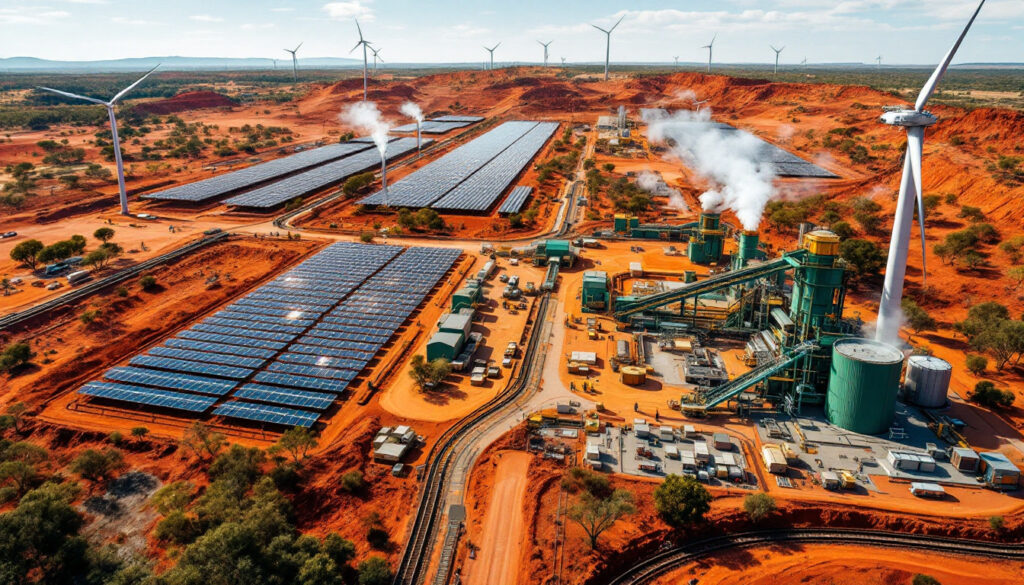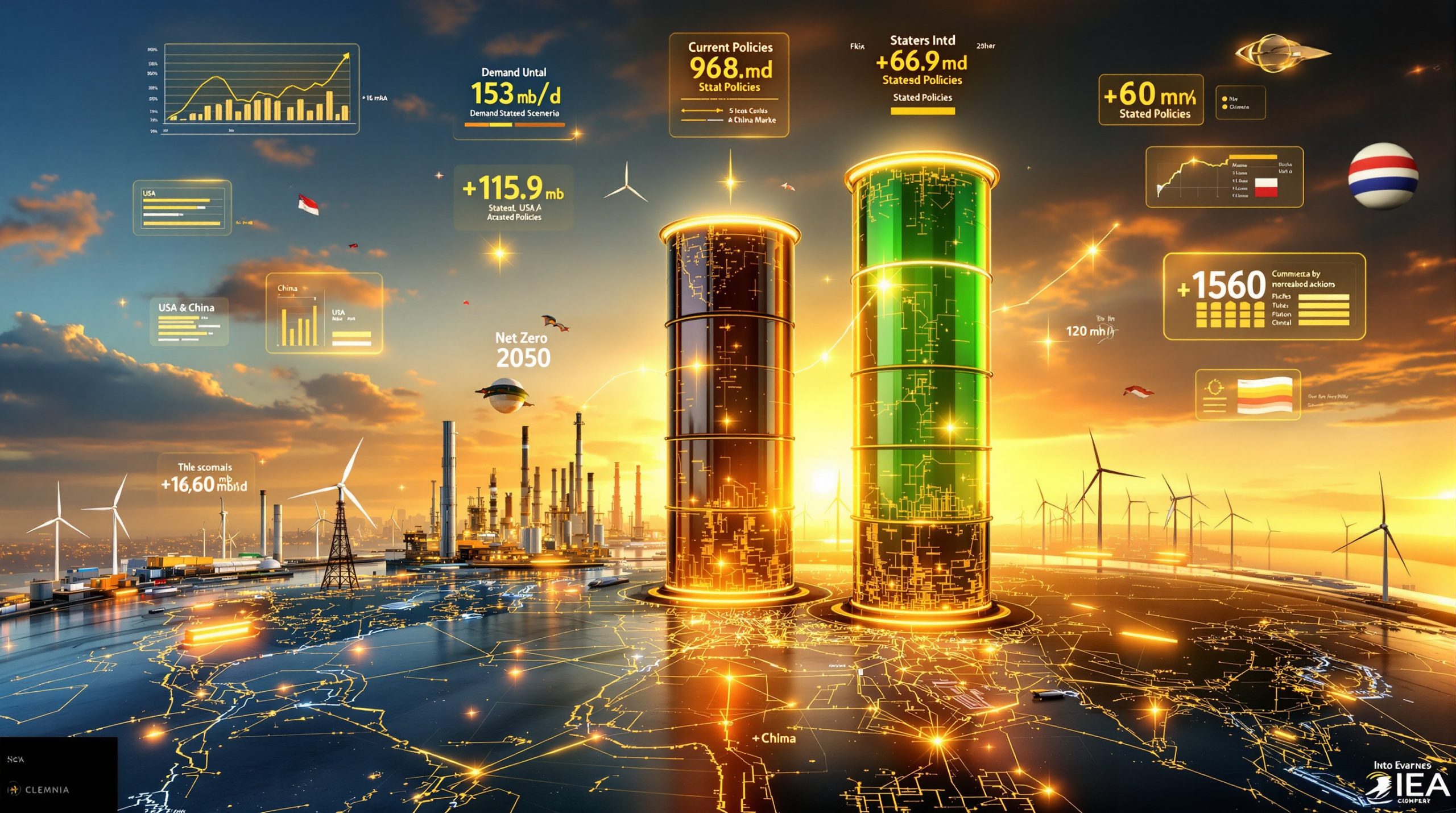Australia is investing heavily in transformative green metals production. Is government funding enough to boost Australia’s green metals leadership potential in 2025? The country is set to lead the evolution of low-carbon production methods. Furthermore, the government has committed billions to this effort, signalling a decisive shift toward sustainable growth.
What is Australia's Green Metals Strategy and Why Does it Matter?
Australia’s commitment to green metals production is reshaping its mining sector. The nation is no longer merely exporting raw minerals but pivoting to high-value processed products. In addition, initiatives such as decarbonisation in mining help underscore the low-emission focus.
This strategic shift is driven by the need to meet global renewable energy demands. Moreover, adopting cleaner production aligns with international climate efforts. The integration of renewable energy systems and electric vehicles makes green metals indispensable. Consequently, stakeholders are debating: is government funding enough to boost Australia’s green metals leadership potential in 2025?
With a robust funding package, the nation is set to secure its market position. In parallel, the approach supports less carbon-intensive production. Undoubtedly, the policy’s success will determine if Australia retains its competitive edge in the global arena.
How Much is Australia Investing in Green Metals Development?
The Australian government has unveiled a comprehensive funding package that highlights its commitment. The plan includes:
- A$1bn Green Iron Investment Fund announced in February 2025
- A$750m allocated for new metals manufacturing technologies from the A$1.7bn Future Made in Australia Innovation Fund
- A total allocation of A$5bn aimed at supercharging the mining industry
- Up to A$500m dedicated to the Whyalla steelworks transformation
- A$2m state government contribution to Fortescue's Green Metal Project in the Pilbara region
Industry experts warn that details on fund application processes need clarification. Furthermore, government agencies such as ARENA must provide clearer guidance. In this context, mining and finance industry predictions for 2025 offer insight into market trends and funding impacts.
While the funding figure is headline-grabbing, its real-world execution is under scrutiny. Uncertainty remains whether is government funding enough to boost Australia’s green metals leadership potential in 2025. Consequently, financial transparency and supportive regulation are paramount to further harnessing these investments.
What is Driving Australia's Push into Green Metals?
Multiple factors are fuelling Australia's green metals push. Firstly, market demand is set to skyrocket with clean energy systems and electric vehicle expansion. Furthermore, the global push for sustainability enhances the appeal of green metals.
Key drivers include:
- A surge in global demand for green metals by up to 4.5 times by 2030
- Green iron market projections reaching approximately 852 million tonnes by 2050
- Declining traditional iron ore demand from China necessitating value addition
- Doubling aluminium demand by 2050 with emerging sustainable production methods
- Rising international competition, with countries like Brazil setting high benchmarks
In addition, mining’s pivotal role in the clean energy transition is evident as nations seek cleaner production techniques. This multi-faceted demand shift prompts the question: is government funding enough to boost Australia’s green metals leadership potential in 2025? Industry giants insist that early investments promise long-term competitive advantages and market dominance.
What Economic Benefits Could Green Metals Bring to Australia?
Australia’s green metals strategy is projected to unlock significant economic potential. Experts estimate that the annual export value of green iron could hit A$295bn – almost three times current iron ore exports. In addition, the transformation is expected to create extensive job opportunities.
Key economic benefits include:
- An estimated 200,000 direct and indirect jobs in current metals industries
- A potential rise to 400,000 jobs by 2040 if strategic policies are implemented
- Increased domestic value addition, stimulating regional economies
- Strengthening of the manufacturing and engineering sectors
Furthermore, decentralising economic activity from traditional mining hubs could revitalise more diverse regions. As industries begin to reap the benefits of advanced technologies, it remains to be seen if is government funding enough to boost Australia’s green metals leadership potential in 2025. Also, ESG challenges and opportunities driving mining transformation reveal that sustainable practices yield both environmental and economic dividends.
How Does Green Metal Production Impact Australia's Climate Goals?
Green metals production takes on a central role in Australia’s bid to meet its climate targets. Currently, traditional production methods in sectors like steel and aluminium account for significant greenhouse gas emissions. In addition, switching to green technologies is critical.
The benefits include:
- A reduction in domestic carbon dioxide equivalent emissions, which presently stand at 11%
- Alignment with the national target to reduce emissions by 43% by 2030 (from 2005 levels)
- Support for the decarbonisation strategy and enhanced global competitiveness
- Avoidance of potential tariff hurdles from carbon border adjustment mechanisms (CBAMs)
Furthermore, powering australia through advanced energy strategies directly supports this transition. The approach combines immediate efficiency measures with longer-term investments. As debates continue over whether is government funding enough to boost Australia’s green metals leadership potential in 2025, reducing carbon emissions remains a top priority.
What Technologies Will Drive Australia's Green Metals Transition?
A variety of emerging and established technologies are set to revolutionise Australia’s green metals sector. The country is leveraging innovations to reduce reliance on fossil fuels. In addition, technological advancements are key to sustainable production.
Notable technologies include:
- Direct reduced iron (DRI) using mature technology
- Electrification of production processes to lower emissions
- Energy efficiency improvements driven by state-of-the-art solar resources
- Carbon capture to mitigate residual emissions
- Green hydrogen integration in metal production processes
- Electric arc furnaces for sustainable steel-making
Experts suggest that Australia’s high-grade magnetite deposits are ideally suited for hydrogen-based DRI. This method uses less hydrogen than alternatives, yielding cost advantages. Moreover, australia's 2-billion-dollar green aluminium initiative highlights the nation’s technical prowess in aluminium production. Such innovations prompt further discussion on whether is government funding enough to boost Australia’s green metals leadership potential in 2025.
An external resource from mining technology provides additional insights into the promising outlook for the sector.
What Challenges Does Australia Face in Green Metals Development?
Despite promising advances, Australia’s path to green metals leadership is not without obstacles. The vast geography complicates logistics and the coordination of infrastructure projects. Moreover, balancing short-term priorities with long-term goals is challenging.
Some pressing challenges are:
- Allocation of investments between current technologies and future innovations
- Unclear timelines for technology deployment and operational readiness
- The need for immediate action versus the planning required for long-term benefits
- Intense global competition from resource-rich nations
- Regulatory uncertainties and inconsistent application processes for funding
Furthermore, current barriers include infrastructure inadequacies such as fast-tracked electricity transmission and hydrogen pipeline networks. Industry participants emphasise that strategic planning is vital. Hence, the ongoing debate centers on whether is government funding enough to boost Australia’s green metals leadership potential in 2025. Government initiatives and clearer regulations will be key to overcoming these hurdles.
Is Government Funding Sufficient to Secure Australia's Green Metals Future?
The A$5bn funding commitment is undeniably significant, yet its sufficiency remains debated. On one hand, industry leaders praise the bold financial commitment. On the other hand, many experts urge that additional measures are needed to create a sustainable environment for innovation.
Several factors highlight this complex situation:
- The need for clear, consistent regulations that match the level of government commitment
- The importance of supporting transitional technologies alongside mature systems
- Balancing immediate investments with long-term research and development
- Global competitors making comparable or greater investments in green tech
Industry insiders, including the Australian Steel Association, stress that stable regulation and transparent processes are as critical as direct funding. In this respect, many wonder whether is government funding enough to boost Australia’s green metals leadership potential in 2025. Furthermore, comparative studies show that nations such as Brazil are already stretching their investments, creating a challenging competitive framework.
How Do Industry Experts View Australia's Green Metals Potential?
Leading voices in the industry offer varied perspectives on the nation’s future. Experts highlight that Australia’s robust resource base and technical expertise position it favourably for a breakthrough in green metals production.
Key insights include:
- Deloitte and WWF Australia have noted that renewable hydrogen production for green iron represents a "natural sweet spot" for the country.
- IEEFA’s lead global steel analyst, Simon Nicholas, underlines the benefits of value-added green iron exports.
- The Australian Aluminium Council points to decades of expertise in bauxite mining and alumina refining.
- The Australian Steel Association emphasises that government support is crucial to transformative growth.
Additionally, these experts recognise that strategic investments and supportive policies will be essential. Their opinions reinforce the central debate: is government funding enough to boost Australia’s green metals leadership potential in 2025? With cumulative investment in technology and infrastructure, the industry looks ahead with cautious optimism.
Navigating the Transition Timeline: Short-term vs. Long-term Strategies
The green metals transition in Australia involves a phased approach. Different metals and sectors require tailored timelines to achieve true sustainability. In addition, a mix of immediate and future-focused strategies is essential.
Breakdown of the transition phases:
- Near-term (2025–2030):
- Prioritise energy efficiency improvements.
- Begin partial hydrogen integration in legacy facilities.
- Medium-term (2030–2035):
- Deploy commercial-scale hydrogen-based direct reduced iron.
- Expand renewable-powered smelting capabilities.
- Long-term (2035–2050):
- Achieve a complete zero-emission production cycle across all metals.
Economic modelling indicates that early investments can reduce overall decarbonisation costs. Furthermore, this staged approach helps avoid stranded assets. As the debate continues about whether is government funding enough to boost Australia’s green metals leadership potential in 2025, industry participants agree that strategic foresight and adaptability are paramount.
FAQs About Australia's Green Metals Industry
What are green metals?
Green metals are produced using low-carbon or carbon-neutral processes. These methods significantly reduce emissions compared to traditional production techniques. For example, green steel employs hydrogen instead of coal, while green aluminium is smelted using renewable electricity.
Why is Australia well-positioned for green metals production?
Australia benefits from abundant mineral resources combined with world-class renewable energy sources. Moreover, decades of technical and operational expertise in the metals sector put the nation in a prime position to lead in sustainable production. The strategic initiatives are designed to address whether is government funding enough to boost Australia’s green metals leadership potential in 2025.
How do green metals support the global energy transition?
Green metals play an essential role in renewable energy infrastructures. They are used in manufacturing wind turbines, electric vehicles, and energy storage components. In addition, by lowering the overall carbon footprint, these metals help nations meet their climate targets.
What is the timeline for Australia's green metals development?
While immediate investments focus on improving efficiency, longer-term initiatives pilot full-scale zero-emission production. The roadmap anticipates substantial commercial production by the late 2020s, scaling through the 2030s.
How does Australia's approach compare to global competitors?
Although countries like Brazil are aggressively pursuing green metals, Australia’s mix of strategic funding, renewable resource availability, and technical innovation distinguishes it. Many experts believe that with the right policies, Australia can maintain and even expand its international leadership.
In conclusion, while the nation has made significant strides, the persistent question remains: is government funding enough to boost Australia’s green metals leadership potential in 2025? With ongoing investments and a clear regulatory framework, Australia looks poised to capitalise on its unique advantages.
Ready to Benefit from Early Detection of Mining Discoveries?
Discover how to stay ahead of the market with real-time alerts on significant ASX mineral discoveries through Discovery Alert's proprietary Discovery IQ model, which turns complex mineral data into actionable investment insights. Explore how major discoveries can generate substantial returns by visiting Discovery Alert's dedicated discoveries page and position yourself for potential opportunities in Australia's evolving green metals sector.




